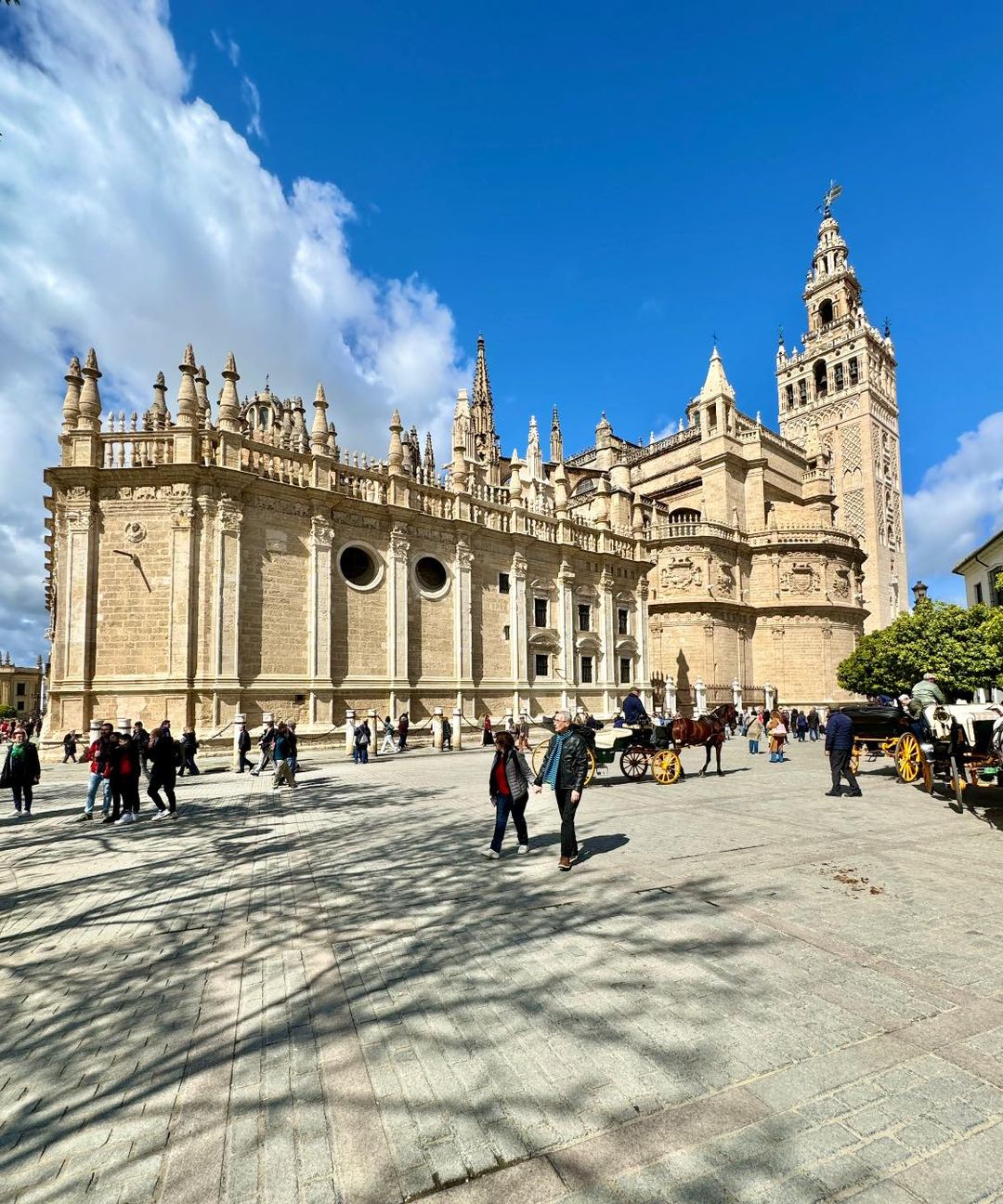The Cathedral of Seville stands as a magnificent testament to both architectural grandeur and spiritual significance. It is hailed as the largest Gothic cathedral globally, a colossal sacred edifice that takes its place as the third-largest religious structure, following the illustrious St. Peter’s Basilica in the Vatican, Rome, and St. Paul’s Cathedral in London. In 1987, the prestigious UNESCO designated it a World Heritage Site, recognizing its profound historical and religious importance.

For over seven centuries, the Cabildo Metropolitano has diligently safeguarded the cathedral’s rich history, ensuring its preservation and relevance in the modern era. Their commitment remains resolute, expressed through the daily observance of liturgy, the joyous celebration of key feasts such as Corpus and Inmaculada, unwavering devotion to the Virgen de los Reyes, and extensive sacramental pastoral care. In the ecclesiastical hierarchy, the Cathedral of Seville holds a preeminent position as the foremost church in the Diocese of Seville.
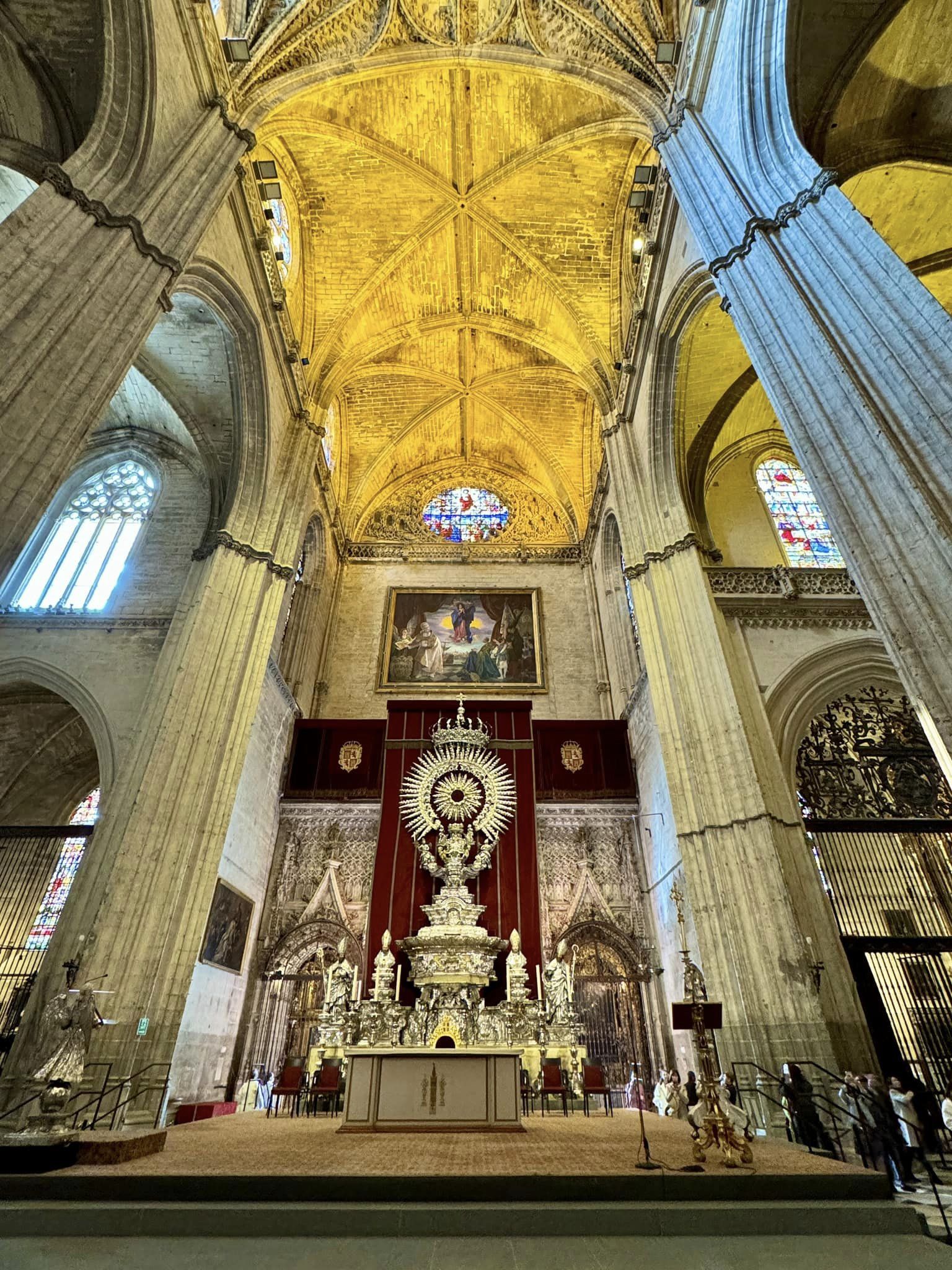
Remarkably, this cathedral possesses a unique and unconventional architectural layout. Comprising five naves, its design echoes perfect alignment with Muslim orientation, facing the East. Departing from conventional Gothic design, it lacks the typical apse with an ambulatory, featuring instead a rectangular hall floor that precisely mirrors the layout of the Alhama. The walls, unusually slender, support the structure, while chapels, separated by buttresses perpendicular to the central temple’s axis, culminate in 28 attached pillars and 32 freestanding counterparts, sustaining 68 pointed vaults. Natural light filters through petite yet exquisite stained glass windows.
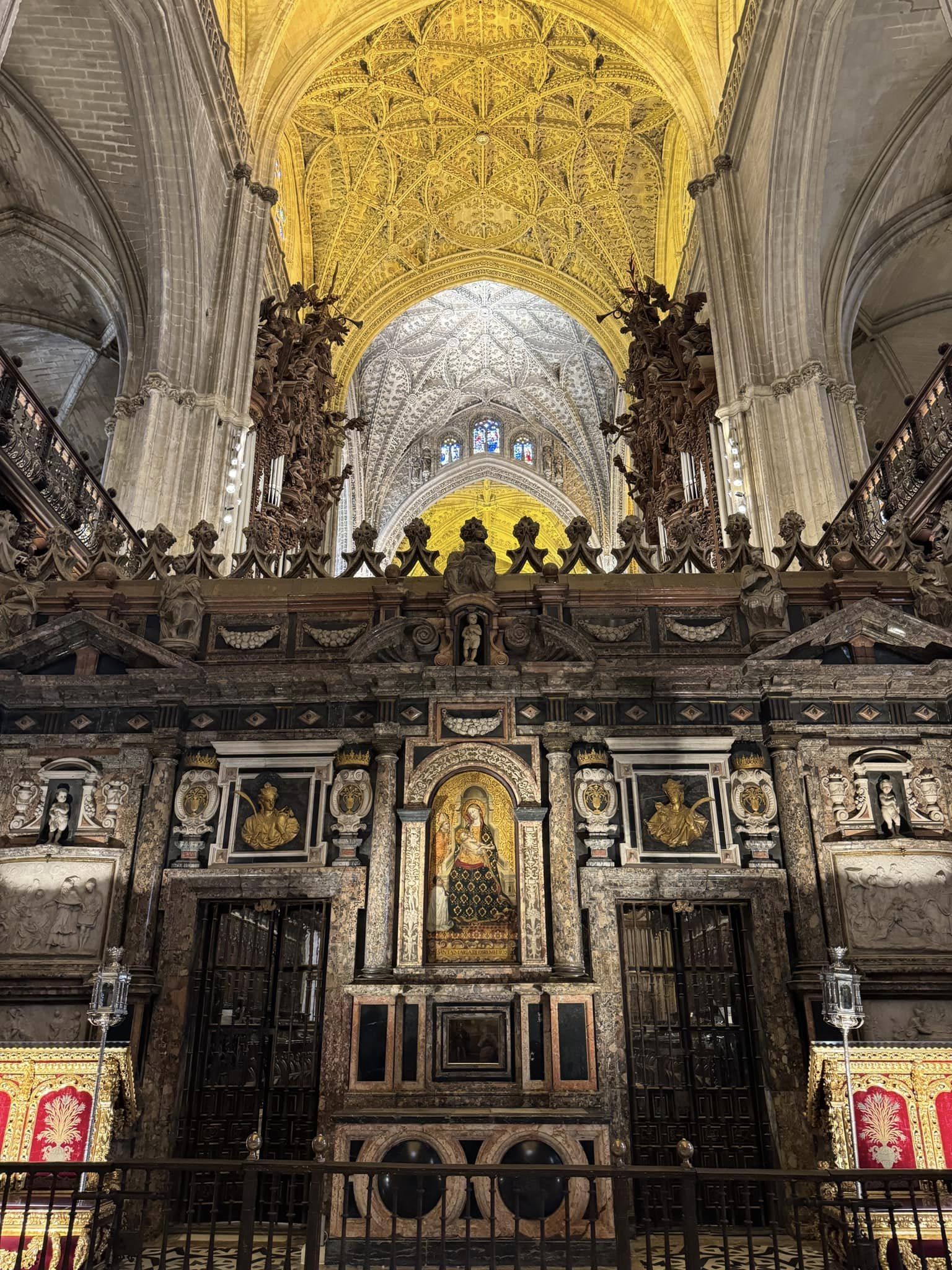
The Giralda, a distinguished structure in its own right, serves a dual role as the bell tower of the Cathedral of Seville. Also granted World Heritage status in 1987, this iconic tower captivates not only through its historical significance but also its architectural excellence and enduring place within the city’s ancient heart. With a square base perched at 7.12 meters above sea level, dimensions of 13.61 meters on each side, and soaring to a height of 104.06 meters, the Giralda’s construction was inspired by the minaret of the Kutubia Mosque in Marrakesh, Morocco. However, its summit and belfry reflect European Renaissance influence.
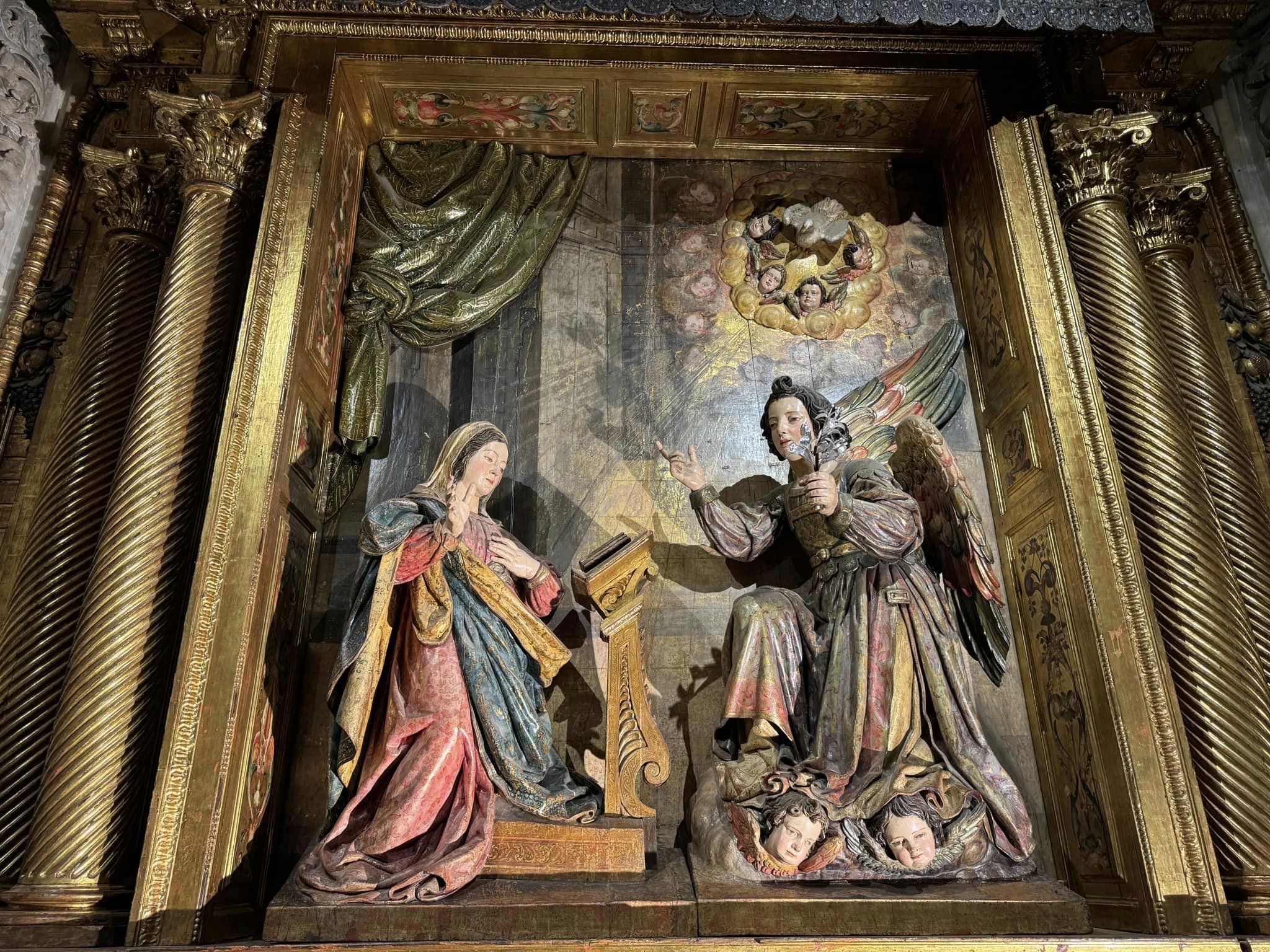
Within the cathedral’s central precincts reside two prominent structures: the choir, flanked by majestic pipe organs, and the Capilla Mayor, boasting four levels, including the grand altarpiece. Adjacent to these are three annexed areas: San Fernando Rey, the Crucero (distinguished by its soaring vaults), and the Trascoro. Each of these zones corresponds to the medieval city’s three hierarchical strata: the regal cathedral, also known as the Panteón de los Reyes, reserved for monarchs; the ecclesiastical cathedral, reserved for the Archbishop and the Cabildo; and the popular cathedral, situated to the West.
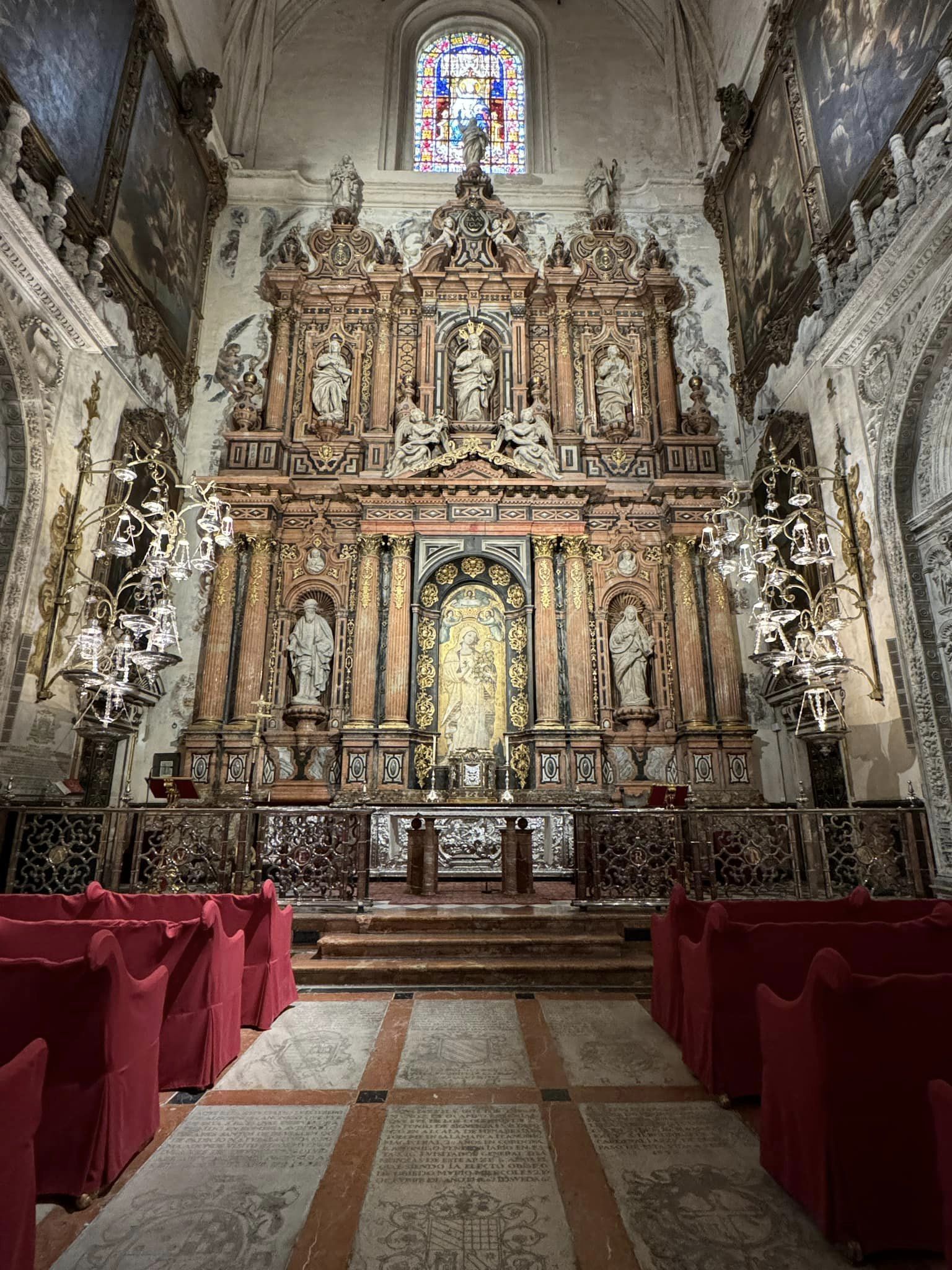
The Capilla Real, located at the head of the cathedral, holds a unique architectural distinction. It deviates from the expected ogival ambulatory typical of the Gothic style and assumes the form of a Renaissance apse. Within its confines rest the remains of San Fernando Rey and his son, Alfonso, along with other members of the royal family from that era. Additionally, it houses the Gothic image of Santa María de los Reyes, the patron saint of the Archdiocese of Seville.

The treasures housed within the cathedral are a testament to its spiritual and cultural significance. Notable among them are a vast collection of paintings by the renowned artist Murillo, including portraits of San Isidoro and San Leandro, as well as Zurbarán’s masterpiece, “Santa Teresa.” Moreover, the sculpted head of San Juan Bautista (St John the Baptist) and the mausoleum of Cristóbal Colón (Christopher Columbus), a masterpiece by Arturo Melida, can be found in the cathedral’s right transept, serving as the final resting place of the illustrious explorer who discovered America.

